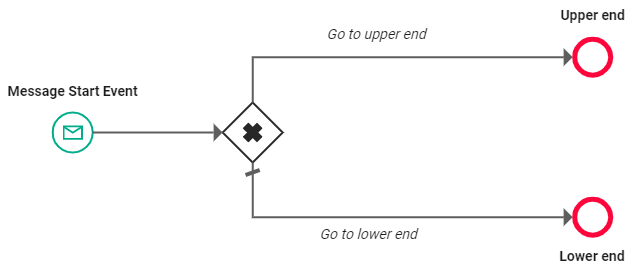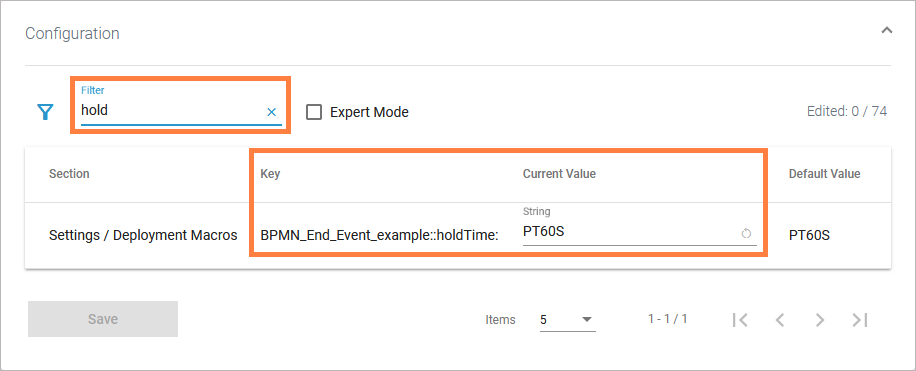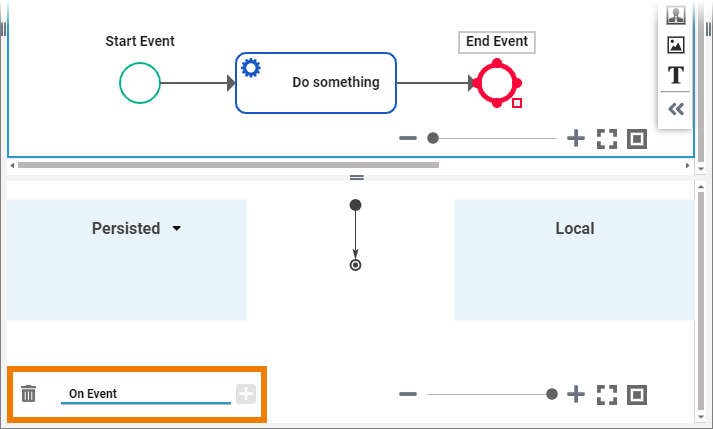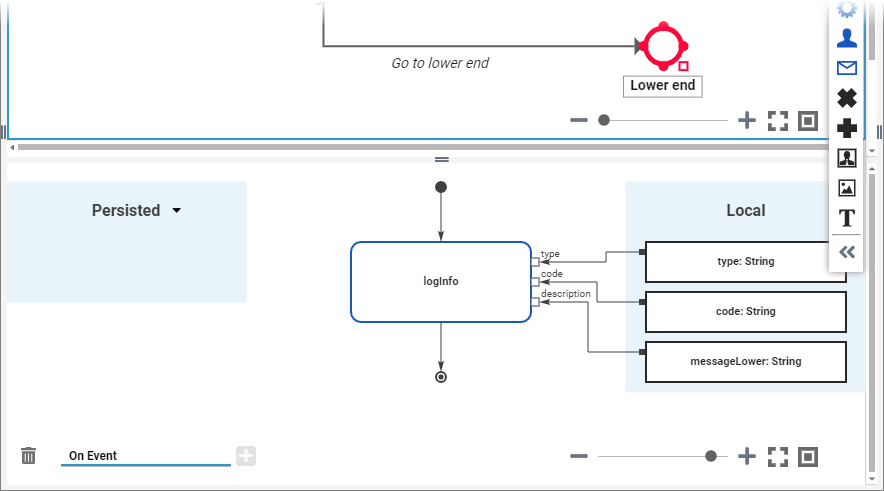With BPMN, processes end with end events. A process must have at least one end event, but it may also have multiple end events. An end event closes the process instance and deletes the related persistent state object from the database.
Process instances are kept in the persistent state database: The instances are created on process start and deleted on process end. Refer to xUML Service State Machines for further information.
A process end is modeled by end events:

Process instances are kept in the persistent state database and they are deleted at process end:
-
When the end state of the BPMN is reached, the meta state Done of the root machine is reached.
-
The instance is deleted from the Done state after the holdTime expires.
-
The default holdTime is 60 seconds (PT60S). You can change the value in the service settings in the integration application (Bridge).

One BPMN element is available to model process ends:
|
BPMN Element |
Usage |
Details |
|---|---|---|

|
|
End Event
The end event indicates that the process is completed:

Refer to the reference page End Event for all details.
A BPMN model may also have multiple end events:

You can create an execution model (On Event) for an end event. The model will be executed when the end event is reached:

You can add execution for an end event for example...
-
... to perform some clean-up tasks at the end of the process instance.
-
... to send out notifications.

BPMN_EndEvent_Example
Click here to download a simple example model that shows what you can do with End Events in Scheer PAS Designer.
Related Content
Related Pages:
